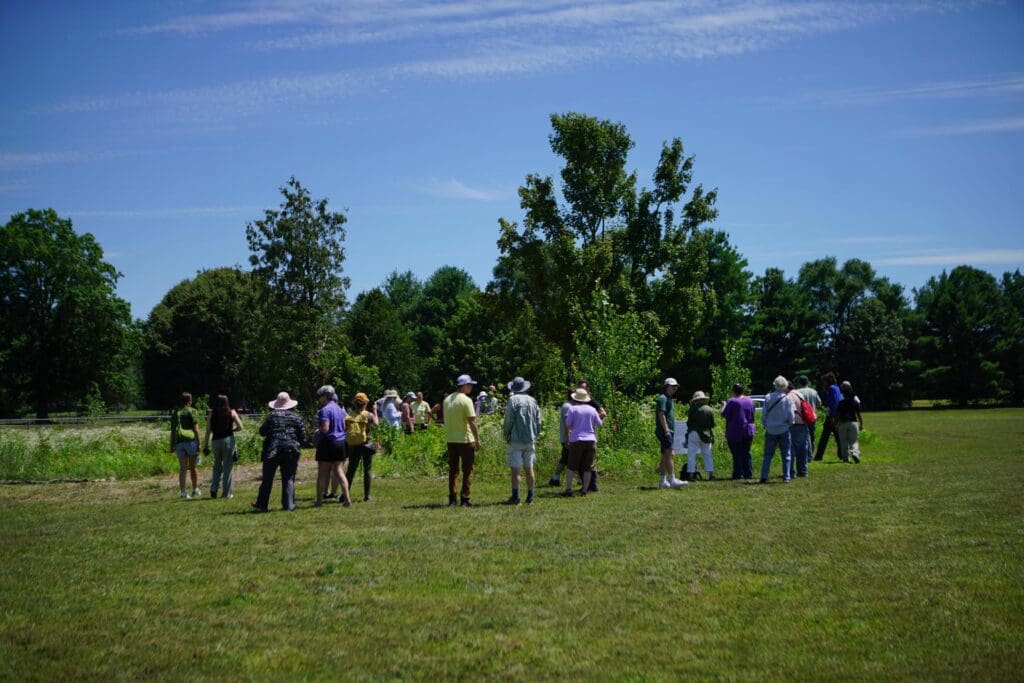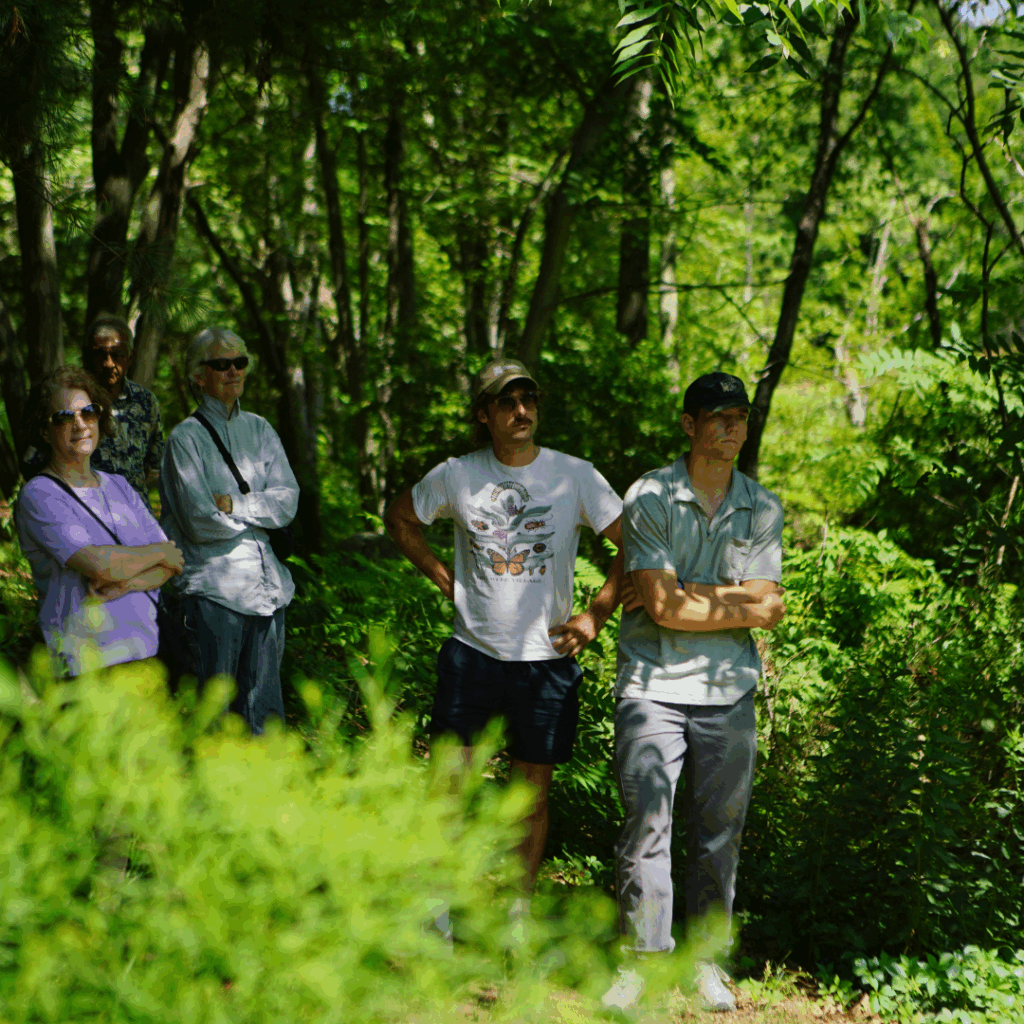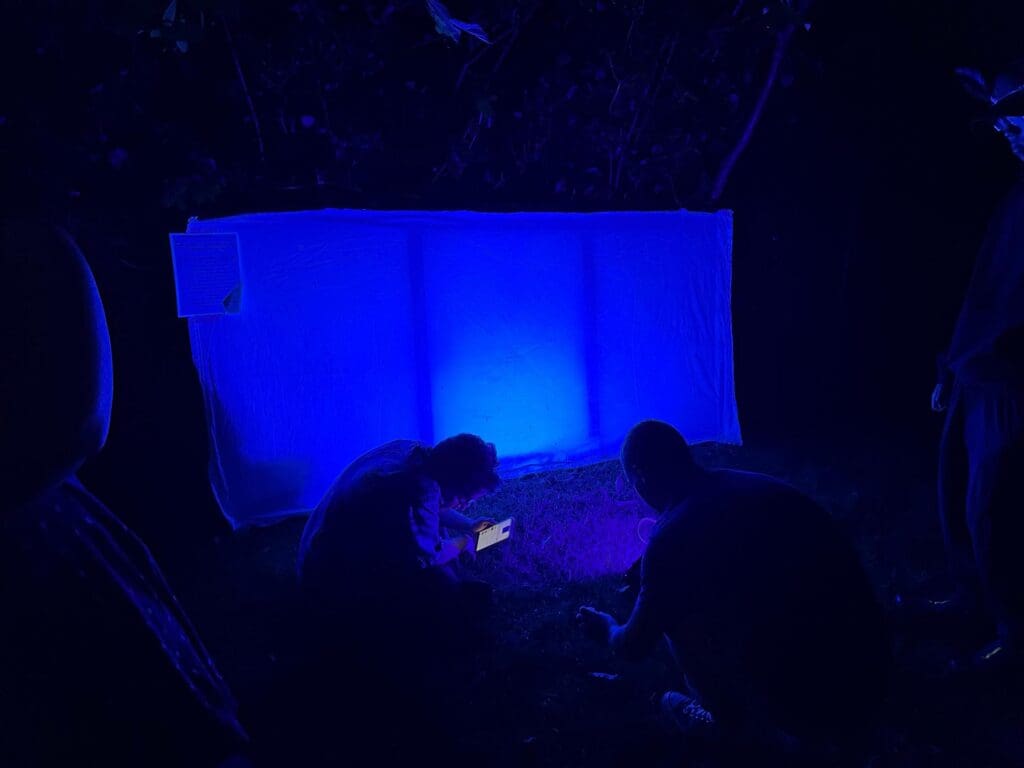Which fungi creature gets its name from a bird, helps heal internal wounds, and benefits people worldwide?
Turkey tails!
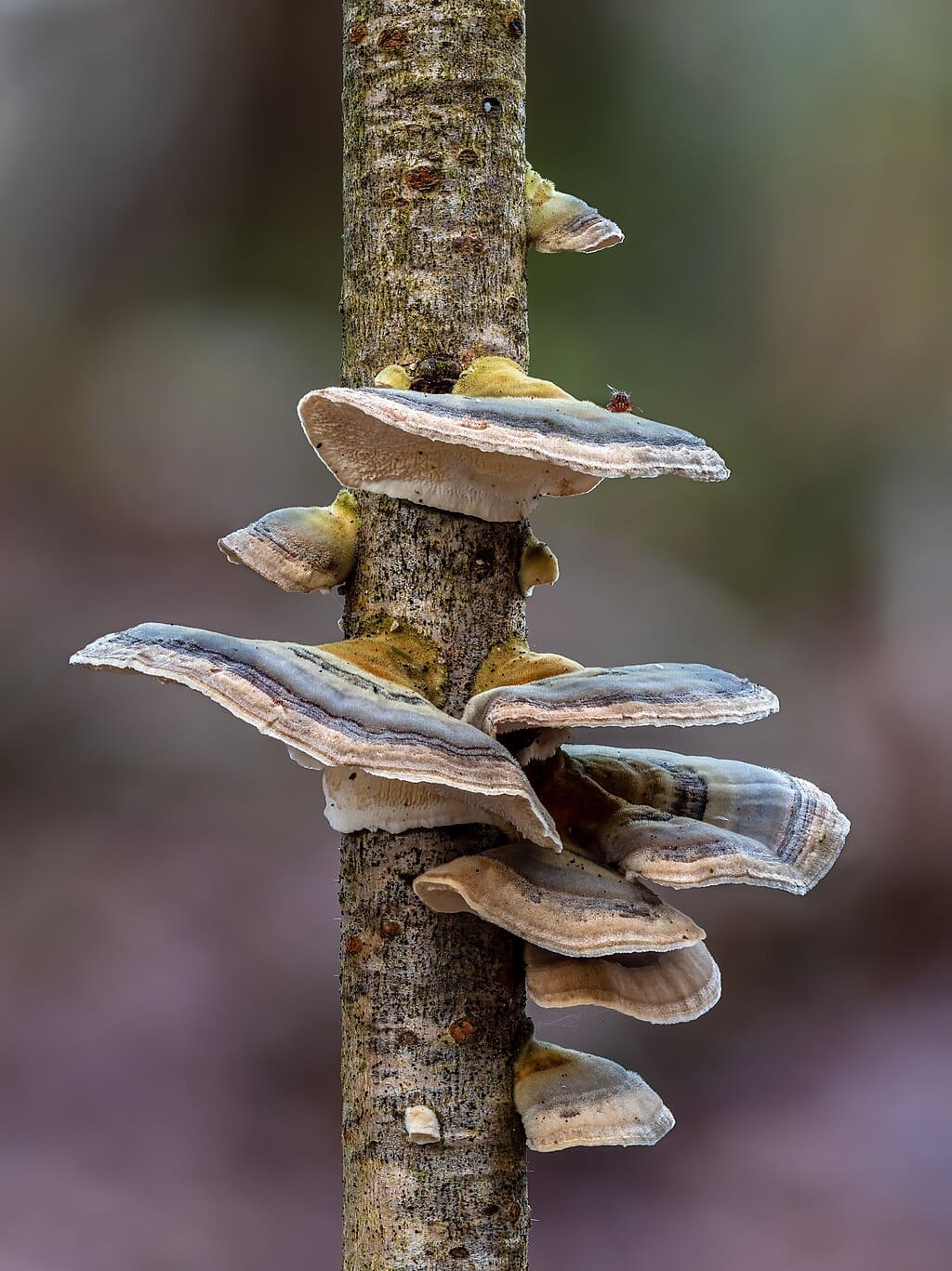
This year I took two trips – one to Nashville, Tennessee and another to the Northeast, specifically to White Mountain National Forest in New Hampshire (Abenaki Penacook land). Both of these places have more trees than I’m used to in Southern California, so I was instantly amazed by everything that grew throughout these forest wonderlands, especially the turkey tails.
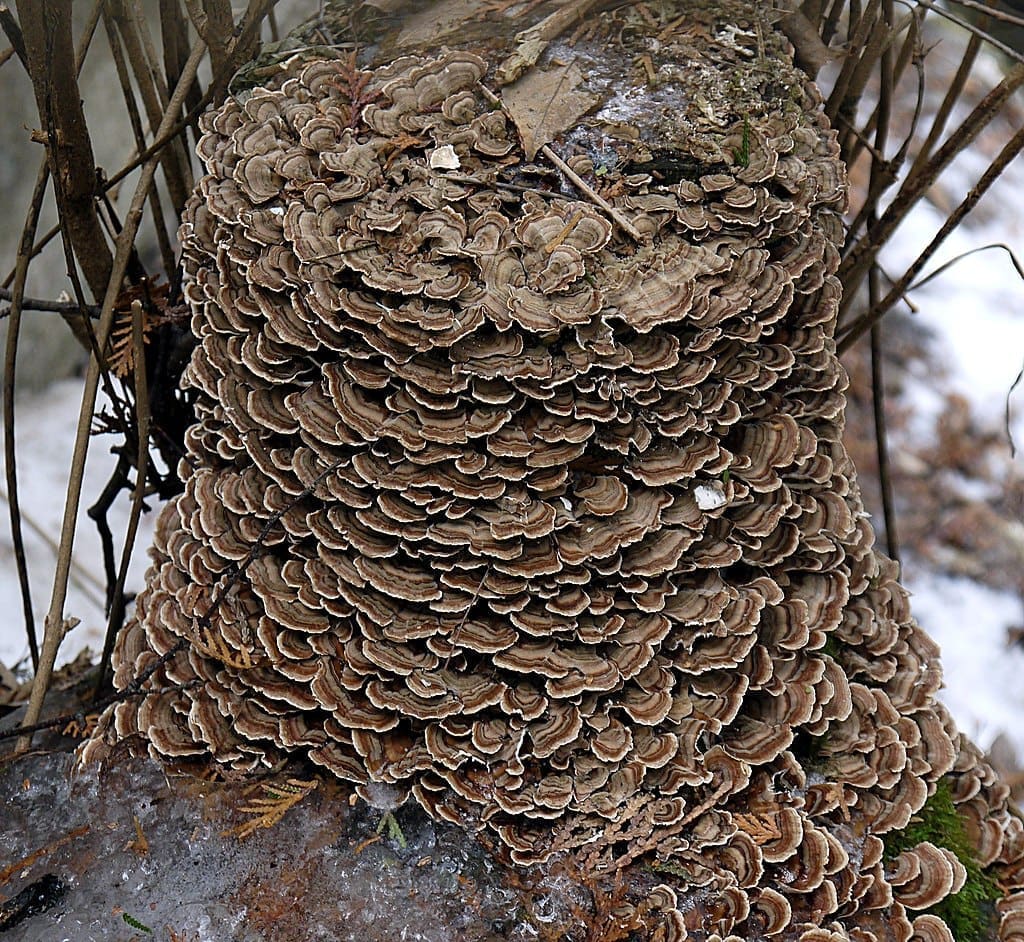
A Bird Fungus
Turkey tails have three scientific names (depending on whom you ask): Trametes versicolor, Coriolus versicolor, and Polyporus versicolor. The common name, turkey tail, derives from the mushroom’s bands that resemble a wild turkey’s tail in color and shape. The ‘versicolor’ in the scientific names refers to the mushroom’s cap and its many colorations, from white, red, orange, to dark brown. This part of the mushroom has a fuzzy texture, almost as if it had tiny hairs all over, and is extremely flexible so you can bend it without breaking it. The ‘trametes’ in one of the scientific names refers to the genus, and the ‘polyporus’ refers to the placement of the pores. Turkey tails are a type of mushroom with pores on their undersides, in contrast to other mushrooms that have gills on their sides.
Polyporous mushrooms tend to grow on dead logs. Turkey tails can be found on fallen trees in nearly every forest worldwide. They grow year-round, but will be extra easy to spot when it’s time to release their spores (in North America, this happens between May and December). You can identify a family of turkey tails by their banding pattern – all the offspring of one individual will sport the same pattern as their ‘parent.’ It’s a fungal fingerprint!
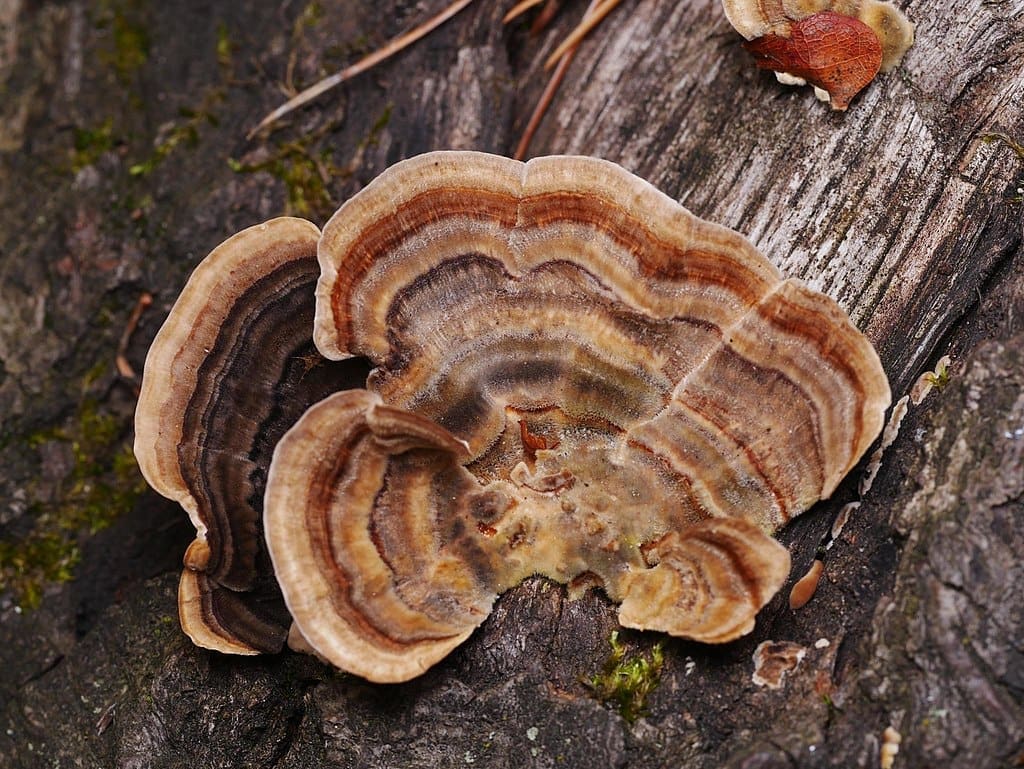
Healthy Tails
Apart from their colors and tail-like shapes, turkey tails are extra intriguing for their health benefits. They contain numerous properties, including:
- Antioxidants, such as phenols and flavonoids, which reduce inflammation and oxidative stress (an imbalance in our systems when we’re unable to detoxify).
- Protein-bound polysaccharides (carbohydrates), one being Krestin which promotes immunity to toxins and regulates immune responses. It also activates white blood cells which protect our bodies from harmful bacteria.
- Prebiotics, which foster beneficial bacteria. They also regulate our gut microbiome, leading to better digestion and lower cholesterol.
- Fiber, found in many mushrooms, which also promotes better digestion.
People who consume turkey tail extract report better athletic performance, less fatigue, and when combined with chemotherapy, increased effectiveness of cancer treatments. By promoting our body’s natural production of beneficial compounds, and counteracting substances that harm us, turkey tails improve overall health when taken as a supplement.
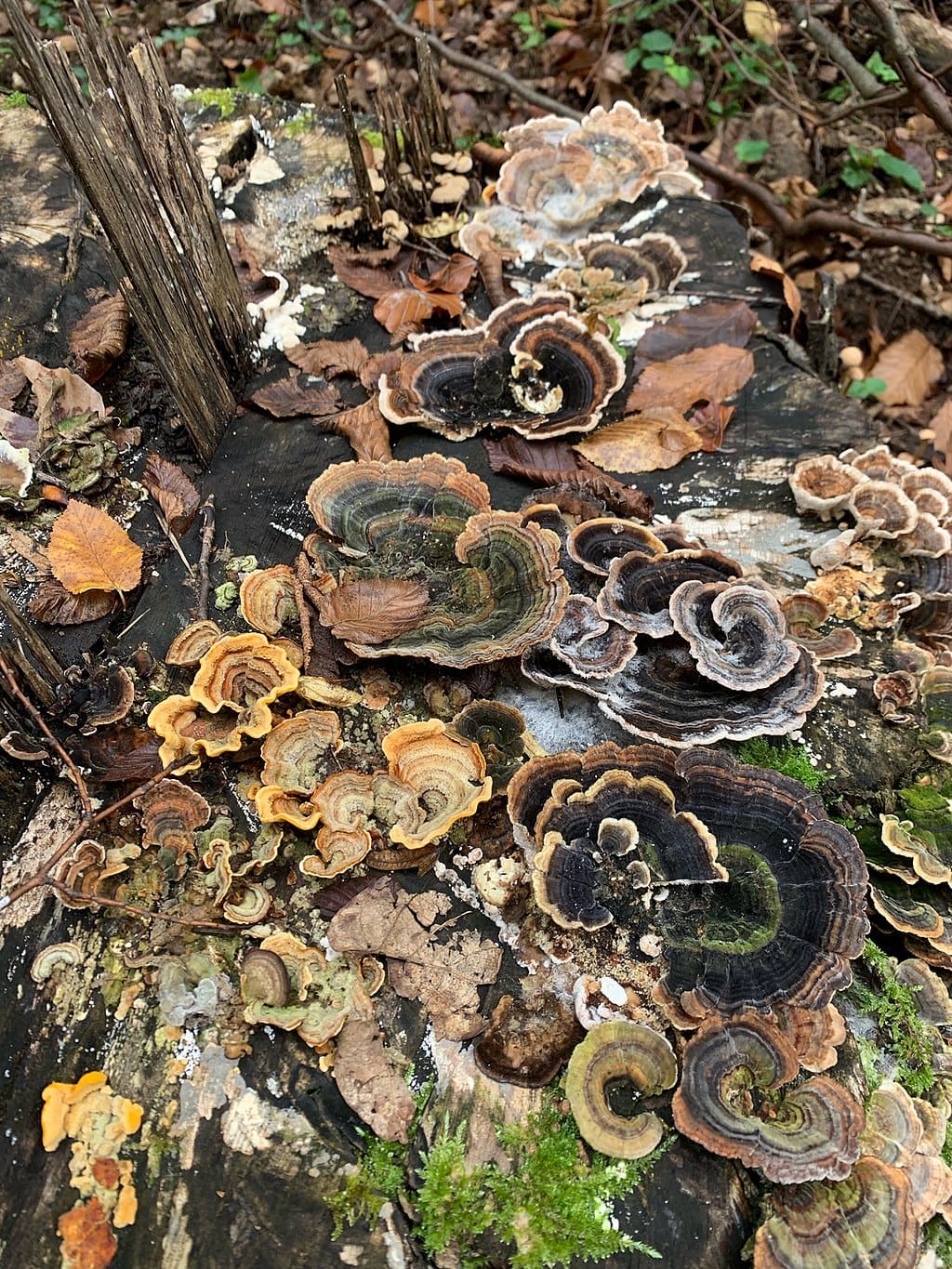
Turkey Tea
There are some mushrooms you can eat right after foraging, but turkey tails are not one of those. To receive the many benefits from Trametes versicolor, you’ll need some prep work.
Due to the thick and woody structure of turkey tails, they’re extremely difficult to consume and, therefore, essentially inedible. However, when you dry them out and grind them to create a powder, you can reap their benefits in no time. After letting them dry, and cleaning them to ensure no dirt or insects remain, you can grind them up. The resulting powder can be put into capsules to be taken as a pill-based supplement, or you can brew some tea to extract the most beneficial compounds. Other mushrooms require a process that involves alcohol before eating, but not turkey tails!
If you’re feeling creative, you can also add the powder to your everyday meals. Since these mushrooms are relatively plain in flavor, people will add the extract to smoothies, oatmeal, or soup to add taste. The powder can be stored for years as long as it’s in an airtight container and kept in the pantry, away from the heat and sun.
We can thank ancient teachings for these turkey tail tips. Traditional Chinese medicine is the first documented time people practiced the art of extracting beneficial compounds from turkey tails. They originally used the extract to treat lung, liver, and spleen issues.
If you try any of these recipes, let us know your experience (you can email us at staff@bio4climate.org)!
A word of caution: If you do decide to forage, for turkey tails or any other organisms, please do so with consideration for the local ecosystem’s health. Only forage what you need, so as to not exploit natural resources.
It’s also best to forage with others when starting out (and it’s more fun this way!). You could join a local foraging group to gain access to resources regarding ecosystem health and potential contaminants in the area. This way, you can learn how to forage without causing harm to your body, other people, or the landscape.
Tea time, anyone?
Tania Roa

Tania graduated from Tufts University with a Master of Science in Animals and Public Policy. Her academic research projects focused on wildlife conservation efforts, and the impacts that human activities have on wild habitats. As a writer and activist, Tania emphasizes the connections between planet, human, and animal health. She is a co-founder of the podcast Closing the Gap, and works on outreach and communications for Sustainable Harvest International. She loves hiking, snorkeling, and advocating for social justice.

